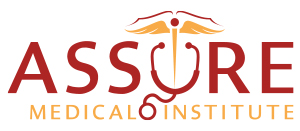Dr. Hoffman is the Co-Founder and Chief Medical Officer of AddictionHelp.com and ensures the website’s medical content and messaging quality. You should check with your insurance carrier to see what coverage they offer for a What is a Halfway House stay at a halfway home. Rehab programs are also available at different levels, from inpatient treatment to a few outpatient recovery programs.
- Another facet of halfway houses is that some impose a curfew to show that the residents are well-rested and have a healthy sleep schedule.
- Each outing must be pre-authorized, and residents must follow strict sign-out and check-in procedures to track their whereabouts.
- Through this structured yet transitional approach, halfway houses provide individuals with the stability and resources needed to reintegrate into society successfully.
What Is The Purpose of A Halfway House?
RRM offices serve as the key coordinators, managing contracts with providers, assessing inmate eligibility, and ensuring that placements are made efficiently and appropriately. The idea of the halfway house has its roots in the early 19th century, when faith-based and charitable organizations began offering support and shelter to individuals released from prison. These early programs aimed to ease the transition from incarceration to community life, helping former offenders avoid recidivism by providing guidance, structure, and resources. To understand the importance of federal halfway houses today, it helps to look at how these facilities have changed and adapted. The history reveals the shifting priorities of the justice system, from punishment to rehabilitation and community reintegration. This section explores the origins and key milestones that have shaped the modern federal halfway house system.
What Are the Limitations of Halfway Houses in the US?
For DOC inmates the idea is to include graduated release through a systematic decrease in supervision and increase in offender responsibility. DOC offenders can go to a Community Corrections as an inmate and / or while on parole as a https://ecosober.com/ ‘Condition of Parole’ placement. Community Corrections programs are supervised by the Division of Criminal Justice (DCJ). For additional information regarding community corrections, visit the Division of Criminal Justice website. It is a community-based, supervised facility designed to help prisoners transition from incarceration to independent living by providing support, accountability, and access to resources.
Employment and Life Skills
This option allows individuals to maintain employment, support their families, and reintegrate into the community while remaining accountable to the justice system. There are a million different opinions online, but when it comes to your life, health and wellness only peer reviewed reputable data matters. At Recovery Unplugged, all information published on our website has been rigorously medically reviewed by a doctorate level medical professional, and cross checked to ensure medical accuracy. Sober-living homes are usually privately owned and expect residents to pay for rent and utilities just like everywhere else. No funding disruptions usually occur, provided all the residents remain current on their rent. Residents may be given specific chores and responsibilities to maintain cleanliness and order in the facility.
Most halfway houses require that residents abstain from drug or alcohol use while living in such facilities. Random tests of drugs and alcohol at random can be employed to check for compliance. The employees or counselors of halfway houses usually offer the residents accountability, direction, and support.
Halfway houses require residents to maintain sobriety, follow curfews, and engage in counseling or recovery programs, reinforcing healthy routines and relapse prevention skills. The federal criminal justice system recognizes that not everyone requires the same pathway to rehabilitation or community safety. As a result, there are several alternatives to traditional incarceration designed to balance accountability, public safety, and successful reintegration. Among these, federal halfway houses and home confinement are two of the most significant—and often misunderstood—options. Federal halfway houses, also known as Residential Reentry Centers, are essential resources for individuals nearing release from federal prison. Understanding how these facilities work, who qualifies, and what to expect can make a significant difference for inmates and their families preparing for reentry.
Recovery Programs
To be accepted for residency at a halfway house, there are specific universal requirements that a person will need to meet. You’ll also want to check with the individual halfway house ahead of time to see if there are any https://zabetta.com/11-powerful-recovery-and-sobriety-memoirs-to/ resident requirements specific to that facility. Halfway houses provide people in recovery with an alcohol and drug-free environment to continue to focus on their early sobriety. Residents of halfway houses have described deeply inadequate sanitation and disease prevention on top of the lack of social distancing.
Community Corrections Facilities
- RRCs provide housing and supervision and offer employment assistance, counseling, substance abuse treatment, and other support services.
- These residences accept individuals who have completed an initial phase of treatment or rehabilitation and need structured support before fully reintegrating into society.
- Residents may also be mandated to participate in therapy sessions, group meetings, or other programs directed at their rehabilitation and development.
- Many also connect residents with employment assistance, education, and life skills training, which are critical for long-term recovery and reintegration.
It emphasizes compliance with regulations, sustainable financial planning, and leveraging grant funding opportunities. Securing employment and managing finances are two of the most important steps toward independence while living in a federal halfway house. Residents are expected to find work, contribute to the cost of their stay, and learn practical money management skills. This section explains the employment requirements, subsistence fees, and financial support services available drug addiction to help residents build a stable foundation for life after release.
